Machining processes form the backbone of modern manufacturing, transforming raw materials into precise, usable components. These processes, which involve material removal from a workpiece, utilize a variety of techniques and machinery ranging from conventional lathes and mills to advanced non-traditional methods like laser and electrochemical machining. In this detailed guide, we’ll explore different machining processes, their working principles, advantages, disadvantages, and applications across diverse industries.
Introduction to Machining Processes
Machining involves cutting, shaping, or removing material from a solid block (workpiece) to achieve the desired shape or finish. It’s an essential subtractive manufacturing process, crucial in making parts with specific dimensions, tolerances, and surface finishes.
Machining operations can be broadly categorized into:
Conventional Machining
Non-Traditional (Advanced) Machining
Each category encompasses unique methods suitable for different industrial requirements and material properties.
Components Involved in Machining
Machining requires various critical components, including:
Machine Tools: Equipment that facilitates cutting or shaping (e.g., CNC milling machines, lathes).
Cutting Tools: Tools like drills, milling cutters, and reamers.
Workpiece: Raw material, usually metal, plastic, or composite.
Fixtures and Jigs: Devices for securely holding and positioning the workpiece.
CNC Controllers: Computers that automate machine movement via G-code.
Factors Influencing the Choice of Machining Process
Several critical factors dictate which machining process to use:
Material Type and Hardness: Some processes work better with hard metals, while others excel with softer materials.
Accuracy and Tolerances: Precision requirements can drive the selection.
Complexity of Geometry: Intricate shapes may need advanced machining methods.
Production Volume: High-volume parts benefit from processes like CNC machining.
Cost and Efficiency: Budget constraints often influence decisions significantly.
Conventional Machining Processes
Conventional machining processes involve mechanical removal of material using sharp cutting tools.
Turning
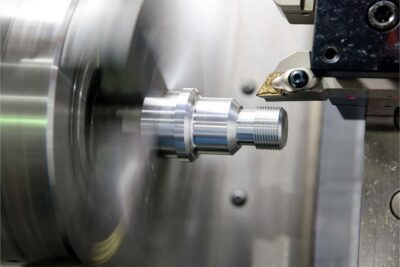
Turning rotates the workpiece on a lathe while a cutting tool removes material to shape cylindrical objects such as shafts, pins, and bushings.
Applications: Shafts, threaded rods, cylindrical housings.
Milling
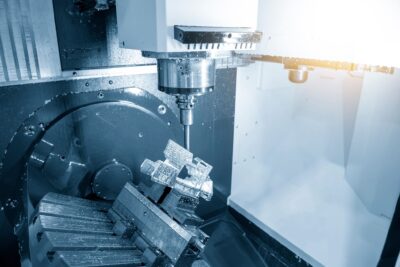
Milling employs rotary cutters to remove material and create complex geometries like pockets, slots, and grooves.
Types: Face milling, end milling, slot milling.
Applications: Machine components, mold cavities.
Drilling

Drilling creates cylindrical holes using drill bits that rotate and cut material.
Applications: Holes for fasteners, dowels, and fluid passages.
Grinding
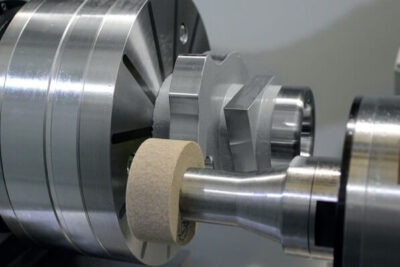
Grinding uses abrasive wheels to achieve precise finishes and dimensions, typically for hard materials.
Applications: Surface finishing, cylindrical grinding, tool sharpening.
Boring
Boring enlarges pre-drilled holes to achieve accurate dimensions.
Applications: Precision holes in engine cylinders, hydraulic components.
Broaching
Broaching uses multi-tooth cutting tools (broaches) to create intricate shapes swiftly and accurately.
Applications: Keyways, splines, gear teeth.
Shaping and Planing
These processes use linear motion to cut flat surfaces, slots, or angles with single-point cutting tools.
Applications: Machine beds, slots, linear surfaces.
Honing and Lapping
These finishing processes enhance surface finish and precision.
Honing: For cylindrical surfaces (e.g., engine cylinders).
Lapping: For ultra-precise surface flatness and finish.
Sawing
Sawing employs a toothed blade for cutting materials into smaller segments or precise lengths.
Applications: Metal billets, bar stock.
Tapping and Threading
Used to produce internal and external threads essential in assemblies.
Applications: Bolts, screws, threaded fittings.
Knurling
Knurling creates patterned surfaces to enhance grip on cylindrical components.
Applications: Handles, knobs.
Reaming
Reaming slightly enlarges holes to achieve accurate sizing and smooth finishes.
Applications: Bearing fits, precision holes.
Non-Traditional Machining Processes
Non-traditional methods utilize thermal, chemical, electrical, or abrasive mechanisms rather than direct mechanical force.
Electrical Discharge Machining (EDM)
Uses electrical sparks to erode material, ideal for hard materials.
Applications: Complex molds, hardened tool steel components.
Laser Beam Machining (LBM)
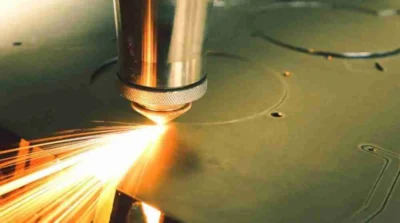
Employs a high-energy laser to cut or engrave materials with extreme precision.
Applications: Electronics, aerospace, medical devices.
Water Jet Machining (WJM)
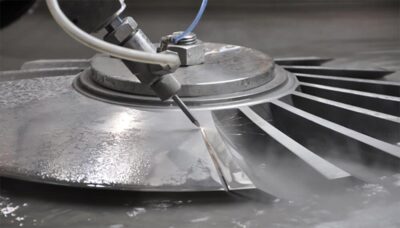
Uses high-pressure water jets mixed with abrasives to cut materials without heat effects.
Applications: Metals, composites, ceramics, glass.
Electrochemical Machining (ECM)
Uses electrical current and electrolyte to dissolve material without mechanical stress.
Applications: Turbine blades, intricate aerospace components.
Chemical Machining (CHM)
Employs chemical etching to remove material selectively.
Applications: Microelectronic parts, complex thin metal sheets.
Plasma Arc Machining (PAM)
Uses a plasma torch to melt and remove material, ideal for thick metals.
Applications: Structural steel cutting, shipbuilding.
Electron Beam Machining (EBM)
High-velocity electrons vaporize material, providing extreme precision.
Applications: Aerospace, fine precision components.
Ion Beam Machining (IBM)
Uses high-energy ions for ultra-precise material removal.
Applications: Semiconductor manufacturing, thin-film applications.
Abrasive Jet Machining (AJM)
High-speed abrasive particles erode material for intricate shapes.
Applications: Brittle materials like glass, ceramics.
Comparison: Traditional vs Non-Traditional Machining
| Aspect | Traditional Machining | Non-Traditional Machining |
| Material Range | Soft to moderately hard metals, plastics | Very hard, brittle, or heat-sensitive |
| Complexity | Simple to moderately complex shapes | Highly intricate geometries |
| Precision | High precision achievable | Exceptional precision, finer tolerances |
| Production Rate | Generally high | Generally slower |
| Tool Wear | High tool wear rate | Minimal or no tool wear |
| Cost | Lower for mass production | Higher, especially setup costs |
Industrial Applications and Practical Considerations
Machining processes are critical in diverse industries:
Automotive: Engine components, transmission systems.
Aerospace: Turbine blades, complex structural parts.
Medical: Surgical instruments, implants.
Electronics: Semiconductor parts, connectors.
Practical considerations involve selecting appropriate methods based on cost, material, precision, and production scale.
Conclusion
Understanding machining processes is fundamental for effective manufacturing, enabling the right choices for precision, efficiency, and cost management. Whether opting for traditional or advanced methods, aligning process capabilities with production needs is critical to achieving optimal outcomes.
Frequently Asked Questions (FAQs)
- What are the primary machining processes?
Turning, milling, drilling, grinding, and shaping are considered fundamental. - What distinguishes traditional from non-traditional machining?
Traditional machining uses mechanical cutting tools; non-traditional employs electrical, chemical, thermal, or abrasive methods. - When should I consider non-traditional machining?
For materials that are hard, brittle, or heat-sensitive, and for intricate geometries not feasible with traditional methods. - How does CNC machining differ from manual machining?
CNC machining uses automated control via computers, offering greater precision and repeatability compared to manual operation.

